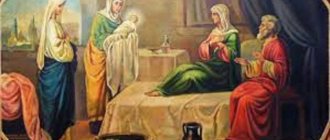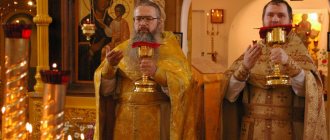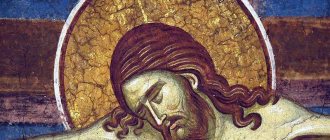Two paths to the Gregorian calendar
The question of the need to switch to a new time was first raised in 1917 at a meeting of the Council of People's Commissars. In 1918, two options for the development of events were put forward there. First: switch to the “new time” gradually, that is, subtract a day from each year - and so on for 13 years (the difference between the calendars was 13 days). This option implied the possibility of such a calendar transition for the church.
The second option, more stringent, implied a one-time replacement of the Julian calendar. And this option did not take into account the interests of the church, but Vladimir Lenin really liked it.
Calendar is a tricky question
Traditionally for Rus', the issue of the calendar was difficult and confusing. Since the time of the baptism of Rus' by Vladimir the Great, only the official chronology has changed approximately five times. With all this calendar confusion, which greatly complicates the work of historians, in parallel there was also a traditional Slavic calendar! But where did such confusion come from?
Old year - new calendar
Two decrees acted as a solution. The first was adopted on February 5 (January 23 “old style”). It talked about the separation of church and state. The second, signed by the Chairman of the Council of People's Commissars on February 8 (February 26 in the Julian calendar), is about the introduction of the Western European calendar in the Russian Republic.
According to the new calendar, the “old” February 1, 1918 was obliged to be considered the 14th. The Church remained in the same position and still uses the “old style” calendar, according to which the apostles and holy fathers lived.
Weekly liturgical circle
The Orthodox Church devotes every day of the week to some important event or to a particularly revered saint.
- On Sunday (the first day of the week) the Church remembers and glorifies the Resurrection of Christ.
- On Monday , ethereal forces are glorified - Angels, created before man, the closest servants of God.
- On Tuesday , Saint John the Baptist is glorified as the greatest of all prophets and righteous people.
- On Wednesday , the betrayal of the Lord by Judas is remembered and, in connection with this, a service is performed in memory of the Cross of the Lord (fast day).
- On Thursday , the Holy Apostles and St. Nicholas the Wonderworker are glorified.
- On Friday , the Passion of the Cross and the death of the Savior are remembered and a service is performed in honor of the Cross of the Lord (fast day).
- On Saturday - the day of rest - the Mother of God, who is blessed every day, is glorified, the forefathers, prophets, apostles, martyrs, saints, the righteous and all the saints who have achieved rest in the Lord. All those who have died in true faith and hope for resurrection and eternal life are also remembered.
Will there be a transition to the Julian calendar?
Channel 5 reports that in 2022, representatives of the Russian Orthodox Church supported the idea of LDPR deputies to return the Julian calendar to Russia.
Archpriest Alexander, rector of the Church of the All-Merciful Savior:
Christmas will be before the New Year. Which is very convenient. Otherwise, the majority will get drunk on New Year’s Day, and the fast will be broken and the holiday will be ruined.
The government did not support the bill, citing the material component of the “experiment.”
In turn, the Russian Orthodox Church is also not going to switch to the Gregorian calendar. In one of the broadcasts of the “Church and the World” program on the Rossiya24 channel, Metropolitan Hilarion spoke unequivocally about this.
homelach 01/07/201801/07/2018 Category Miscellaneous Comment.
Before the birth of Jesus Christ, humanity knew many calendars, but God wanted Jesus to be born precisely when Rome lived according to the Julian calendar, named after the dictator Julius Caesar, on whose behalf the scientist Sosigenes developed a new calendar.
The sage took the astronomical year as a basis - that is, the time during which the Earth makes a revolution around the sun (most likely, the astronomer did not know about this, and for him the Sun revolved around the Earth) and rounded it, and the year turned out to be equal to 365 days, and the remaining hours and minutes (namely 5 hours 48 minutes 47 seconds) over four years turned into one more day, which it was decided to celebrate with an additional day in a leap year. In the new calendar, Julius Caesar himself was immortalized - the month of July was named in his honor.
Council of Nicaea - when to celebrate Easter?
Since Christ was born and lived during the time of the Julian calendar, it was quite natural that His church began its life according to it, and in the 4th century, at the first Ecumenical Council, which was held in the city of Nicaea, they asked about the date of Easter. For reasons of the sequence of gospel events, it should have been celebrated after the Old Testament Passover (Passover), which is dedicated to the liberation of the Jews from Egyptian slavery and which is celebrated during the week of the 14th day of Nissan according to the Jewish calendar. Since Christ was crucified after Passover, his Resurrection should also be celebrated after, and the holy fathers wanted to take into account not only the connection between two holidays of different religions, but also to ensure the independence of Christian Easter from the Jewish calendar, so it was decided to celebrate Easter after the vernal equinox on the first Sunday after the full moon, and if this Sunday coincides with Passover, then Easter should have been celebrated a week later. In order to accurately follow the church calendar, the priests had to take into account the Alexandrian calculus of the lunar cycle, created by the mathematician Meton, who lived five centuries before Christ.
See also: Chinese residential area in the middle of the forest
When calculating the day of Easter, Christians around the world combined the Julian calendar, oriented to the sun, with the Metonian lunar calendar, and everything turned out quite logically, since the equinox fell on March 21, and Orthodox Easter, which became a moving holiday, was always celebrated after Passover.
Reforms are not always good
All Christians lived according to this calendar for a long time, but in the 16th century, Pope Gregory XIII started a calendar reform, and the mathematician Lilio Luigi developed a new calendar that took into account the exact considerations of science. The day of the vernal equinox moved forward by 10 days in terms of calculation, the year became 26 seconds longer, the length of the randomly alternating months became different, the first half of the year turned out to be shorter than the second, and the days of the week no longer coincided with certain dates, as it was before. Despite this, many churches, including Catholics, Protestants and Uniates, recognized this calendar.
The pope's calendar was so inconvenient that at the end of the 19th century a special Commission was created on the issue of the need for a calendar in Russia, which met for almost a year.
See also: Live dinner: top 10 dishes from unkilled animals
Russian astronomer E. Predtechensky pointed out to his colleagues that the Alexandrian calculus of the lunar cycle, adopted in the Julian calendar, still remains unsurpassed in accuracy, in contrast to the Roman calculus adopted by the Gregorians: “...Roman Paschal,” he wrote, “adopted by the Western Church , is... so ponderous and clumsy that it resembles a popular print next to an artistic depiction of the same subject.”
In 1923, the Church of Constantinople switched to the New Julian calendar, which was developed by Yugoslav Milanković, after which 11 Local Churches switched to it, which left the celebration of the Resurrection of Christ according to the Julian calendar, and began to celebrate the remaining dates in a new way. Only Christians of the Russian Orthodox Church and monks on Holy Mount Athos remained faithful to the Julian calendar.
The Gregorian calendar destroys Easter
Our contemporary, Hieromonk Job Gumerov, explains in his articles that the transition of the Russian Orthodox Church to the Gregorian calendar will mean the destruction of Paschal and will lead to canonical violations, because the “Apostolic Rules” do not allow celebrating Easter before Passover: “If anyone, a bishop, or a presbyter, or The deacon will celebrate the holy day of Easter before the spring equinox with the Jews: let him be deposed from the sacred rank.” Despite the ban, Catholics celebrated Easter before the Jews four times in the 19th century and celebrated it five times with the Jews in the 19th-20th centuries; the transition to the Gregorian calendar would shorten Peter's fast by 13 days, and in some years it simply would not exist.
In addition, the clergy considers the circumstances under which the Gregorian style was introduced into circulation too suspicious: in Eastern Europe, in Greece and in Constantinople, anti-Christian people lobbied for it, and in Russia, the introduction of the new calendar was associated with violence against the Orthodox, for example, in In the twenties of the 20th century, Bishop Herman of Finland organized persecution against Russian monks who adhered to the Julian calendar.
See also: How did libraries originate? History of public book depositories
In 1923, the Soviet government demanded that His Holiness Patriarch Tikhon introduce a “new” style, threatening reprisals against the arrested clergy, but the Patriarch remained faithful to the Orthodox faith and did not sign the document. Perhaps in these harsh days he remembered that the Lord sends the Holy Fire to the Orthodox precisely according to the Julian calendar, which means it remains the only true tool for calculating Christian holidays.
Author: Maya Novik (what is this new fashion for large sites - replacing Latin letters with similar Russian ones? Yandex Zen haunts those who want to make money quickly?)
If you find an error, please select a piece of text and press Ctrl+Enter.
BraveRobot found more articles on this topic:
- History of the invention of the calendar
- The Earth is in record proximity to the Sun
- Mother accidentally fed cat candy to child and was horrified
- Types of calendar printing: offset and digital - pros and cons
- The best quotes from the Bible
- Very hot? What is the temperature on the Sun in comparison
- Celtic Animal Horoscope: Pages of an Ancient Book
- Why Asterix and Obelix didn't braid their hair
- How is Jesus Christ different from the prophet Isa?
- Residents of the Earth will see a total solar eclipse on July 2
The first confusion, or the Byzantine calendar
After the transition of the Eastern Slavs to the fold of the Byzantine Christian Church (before the immediate split into Orthodox and Catholic), along with the new religion, a new calendar came to Rus': the Byzantine. This is where the first feature of Russian chronology arises. The fact is that the Byzantine calendar (introduced, by the way, in 988) assumes September 1st as the beginning of the new year. In Rus', it was customary to count the New Year from the beginning of March. Later this led to disagreements among chroniclers: when should the beginning of the year be counted?
Some literate men considered it correct to count from the first of March until the introduction of the calendar, i.e. the year began six months earlier than the Byzantine year. Part - from the first of March after its introduction, the year in the capital Kyiv began six months later than in Constantinople. These two norms for maintaining the calendar are called “ultra-March” and “March”, respectively. To the horror of historians and theologians, in some chronicles and lives of saints both traditions are used at once! In addition, the people had their own folk calendar, which was also different in each individual region!
All this created difficulties in public administration, especially in such a vast country as Rus'. Calendar problems worsened with the arrival of the Mongol hordes. Only in 1492, the strong statesman and collector of Russian lands Ivan III put an end to the chronological chaos. Under him, in our latitudes, the New Year began to come on one specific day: September 1st.
Official website of the Moscow Patriarchate
Main news
His Holiness Patriarch Kirill will elevate Bishop Veniamin, elected Patriarchal Exarch of All Belarus, to the rank of metropolitan
On the feast of the Don Icon of the Mother of God, His Holiness Patriarch Kirill celebrated the Liturgy at the Don Stauropegial Monastery and led the consecration of Archimandrite Pitirim (Dondenko) as Bishop of Jakarta
His Holiness Patriarch Kirill performed Matins with the Rite of Burial of the Most Holy Theotokos in the Cathedral of Christ the Savior
On the feast of the Dormition of the Most Holy Theotokos, His Holiness Patriarch Kirill celebrated the Liturgy in the Cathedral of Christ the Savior and led the consecration of Archimandrite Artemy (Kuzmin) as Bishop of Taganrog
On the eve of the Feast of the Dormition of the Blessed Virgin Mary, His Holiness Patriarch Kirill celebrated an all-night vigil in the Cathedral of Christ the Savior
Archive
The extremely alarming situation associated with the coronavirus epidemic in Europe is known. A correspondent for the Pravoslavie.ru portal turned to Metropolitan Mark of Berlin and Germany with a request to tell us about how the Orthodox live in the new circumstances.
— Vladyka, how are our Orthodox brothers and sisters from the Russian Church Abroad in Germany experiencing this time now?
“It’s difficult for them to worry because we don’t have the opportunity to hold services as usual with our parishioners.” But we perform daily services: two priests, sometimes a deacon, two choristers in our monastery in Munich - and this service is broadcast via the Internet to the homes of parishioners. We cannot give communion to anyone at the service. But we have prepared many spare Gifts and invite people one by one to enter the temple, where we commune with them with the spare Gifts. In addition, we told everyone that we were ready to come to our parishioners’ homes at any moment to give them communion there.
— What laws in Germany should Orthodox believers follow now?
— Nowadays, new laws are published virtually every day. At one time, it was different in different cities: in one city no more than 50 people could gather, in another - no more than ten, and in a third - no more than five. And now in all of Germany it has been determined: no more than two. Of course, this is extremely, extremely difficult for the Church...
—Are special prayers offered in connection with this epidemic?
“In all churches we pray with those petitions and prayers from the Trebnik, which are contained in the rite for deliverance from pestilence and deadly infection. We include these petitions in the celebration of the Liturgy, each priest differently. Some priests read a prayer from this rite, others include petitions from the rite in a special litany. In general, this is at the discretion of each priest.
— Is there panic among the Orthodox in Germany? How sympathetic are the Orthodox in Germany and in the ROCOR in general to the forced measures aimed at preventing and overcoming the difficult epidemiological situation?
— I must say that our believers accept this in different ways. Some people do not trust all this at all and believe that panic is being fanned on purpose. Others believe that everything is justified. There's a big range here. Until today, it was the case that mostly elderly people aged 70 years and older died. But just today news came that this disease has also affected younger people.
We must, of course, take every precaution at our disposal. Naturally, we cannot resist the general desire to streamline the matter of limiting the spread of the disease. We understand that the main thing now is to prevent hospitals and existing clinic resources from being overloaded. Doctors are critically overworked, and we must do everything we can to make their work easier.
— There are probably people among believers who say that this whole situation is similar to the persecution of faith and the Church, as in the first centuries of Christianity?
“I haven’t heard this and I think it’s a frivolous argument.” Because now the economy is suffering first of all. German Airlines (the flag carrier of Germany, the largest aviation concern in Europe, one of the largest airlines in the world - Ed.) has actually already gone bankrupt. They now produce only 4% of flights from their usual volume. That is, this company will need huge government assistance in order to survive at all after all this. This is just one large company that is most visible. And I think other businesses are also suffering, even small, regular family businesses - like bakeries. This is a very serious situation, and I don’t think anyone would allow this for the sake of some kind of propaganda or for the sake of subordinating all the inhabitants of this country to some kind of regime.
— How is your monastery of St. Job of Pochaev doing today?
— We live in a monastery and can perform all services as we are accustomed to. We broadcast services for our believers, not only the parishioners of our monastery, but also for believers in Germany in general. In our monastery we are one family, and nothing can be forbidden to us inside our monastery.
—Can pilgrims visit your monastery now?
- No, we do not accept pilgrims - first of all, for the safety of people. In addition, this is now prohibited by law.
— How do the parishioners of your monastery receive communion?
— Monastery priests accept confession and give communion to parishioners with the spare Gifts outside the service. So, in recent days we have given communion in this way to a number of our believers who often come here for services.
— We sincerely thank you, dear Bishop, for this interview. What would you like to wish your parishioners and all of us during this difficult time?
- Thank you! We really need your prayers right now.
Interviewed by Maxim Buchnev
Orthodoxy.ru/ Patriarchy.ru
We have been using a calendar all our lives. This seemingly simple table of numbers with the days of the week has a very ancient and rich history. The civilizations known to us already knew how to divide the year into months and days. For example, in ancient Egypt, based on the pattern of movement of the Moon and Sirius, a calendar was created. A year was approximately 365 days and was divided into twelve months, which in turn were divided into thirty days.









